Today, I’ll apply the same read noise analysis approach of the last few posts to a new camera, the Sony alpha 7S. The a7S has the — unique in my testing — ability to change its conversion gain as a function if the ISO setting. The conversion gain jumps when the ISO dial is turned from 1600 to 2000, That turns out to dramatically affect the read noise.
First, let’s look at the raw red-channel (since there’s no light falling on the sensor, it doesn’t make any difference what channel you pick) dark-field noise at 1/8000 second as a function of a horizontally-oriented 1xn averaging filter. This filter retains vertical variations, while eliminating more and more horizontal ones as the kernel size increases. The read noise in this case is the same as the dark-field noise, since the a7S does not cut off the bottom of the dark-field histogram like some cameras.
All of the curves have a positive second derivative (their slope is increasing), except for high ISO at large kernels. If the read noise were white, that wouldn’t be the case. In addition, all the plots at ISO 1600 and below, with the exception of the ISO 200 curve, have a pronounced rise in level as the kernel size increases after about 100. It’s not clear what this means, but I’ll show you the images in a future post, and maybe we can figure it out..
If we filter the image with a vertical kernel, we get this:
Roughly the same situation, except the systematic change of slope for all the curves is more pronounced. This means that more of the low frequency read noise is in the vertical than in the horizontal direction.
If the read noise of the a7S were white, the curves, referred to the input of the pre-ADC gain stages, would look like this:
The read noise starts out as about 12 electrons at ISO 100, and comes down as ISO is increased to 1600. Then it makes a big jump at ISO 3200, and stays close to that low level as ISO is further increased. As in the immediately preceding posts, these read noise numbers are higher than others have reported, and, indeed, higher than I have previously reported, because I measured teh standard deviation of the noise across the entire sensor, not just a small square in the center.
Normalizing the filtered curves to the ideal (white) behavior, we get the following plots:
At high ISOs, the low-frequency component of the read noise raises the standard deviation by a factor of 4 for vertical averaging, and less than 2 for horizontal averaging. At lower ISOs, things get somewhat worse, with ISO 100 being an outlier.
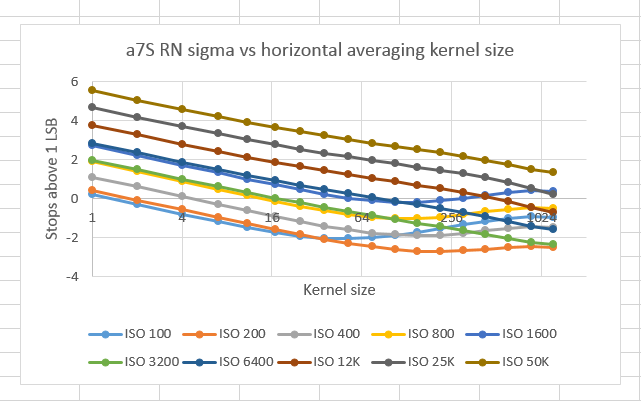
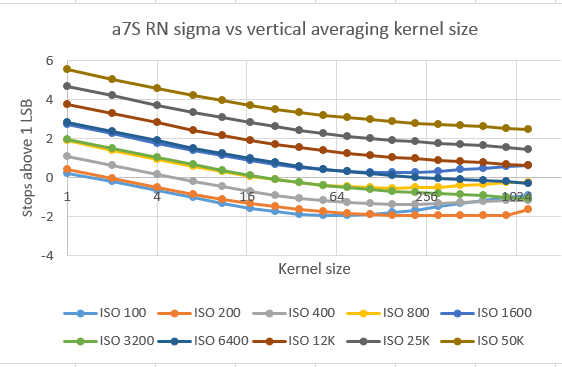
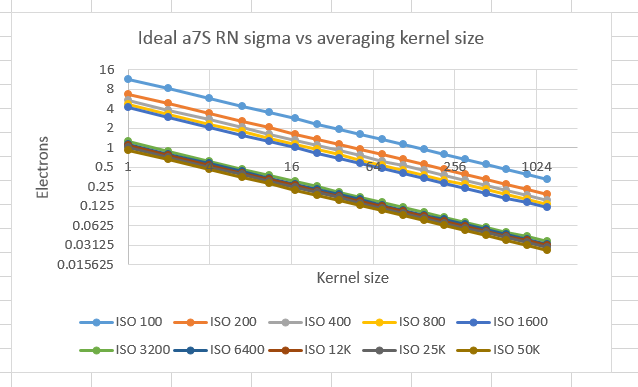
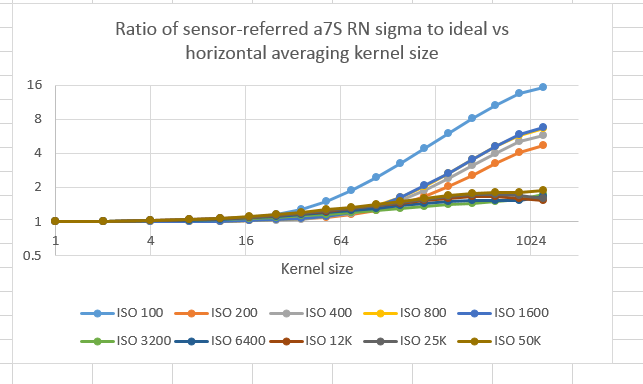
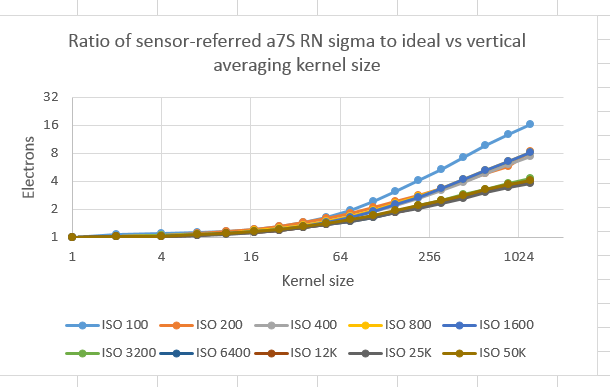
Leave a Reply